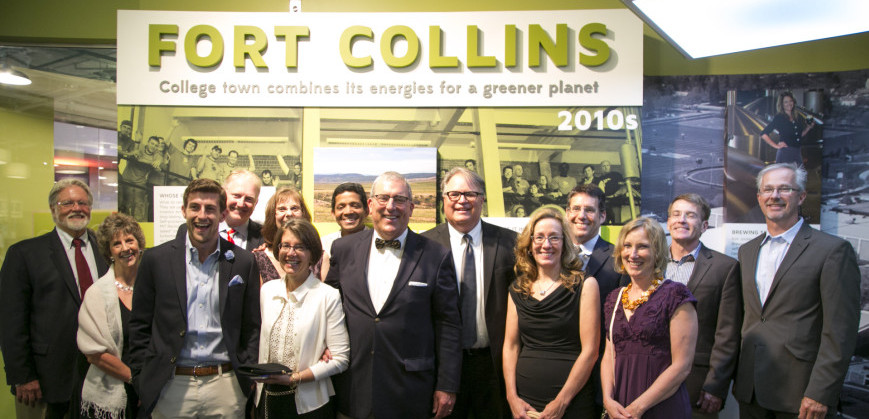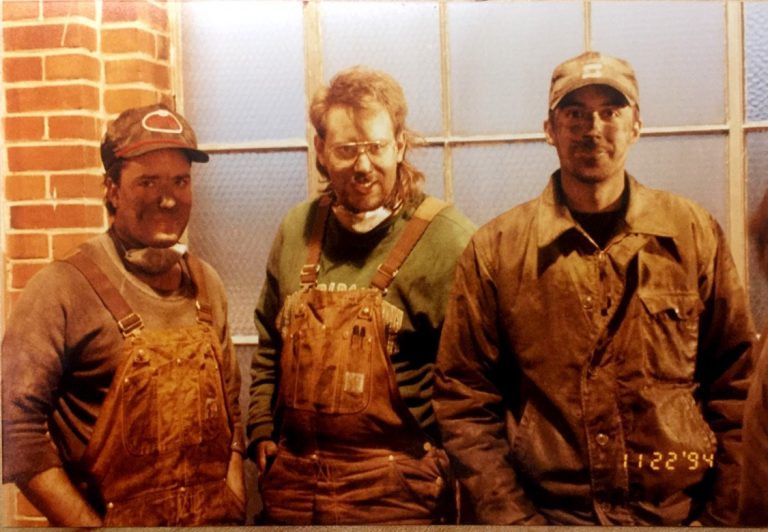History of the Powerhouse
The building known as the Fort Collins Municipal Power Plant was constructed in 1936, in response to the city’s need to power through the financial hardships of the Great Depression by selling low-cost power to its residents. The history of the building can be seen still today.
Construction of the three-story power plant took place in 1935. The plant is located on the original site of the Old Camp Collins, the U.S. Cavalry Post established in 1864 by 9th Kansas Volunteer Cavalry to provide protection to stage and emigrant traffic along the Overland Trail.
The building originally contained two coal-powered steam turbines within its almost 8,000 square-foot foundation. In addition, a landscaped grotto consisting of a waterway and collecting pool was also built, and was used as a part of the power plant’s cooling system.
In 1937, an Art Deco terra-cotta fountain, made up of a large obelisk with four fish and four gargoyles centered inside of a circular pool, was installed on the property.
Over the decades, various expansions took place, but eventually the power plant no longer served the community’s power needs and was decommissioned from service in 1973.
The Fort Collins Municipal Power Plant, its grotto, and the terra-cotta fountain were designated as local historic landmarks by the City of Fort Collins in 1987. The building was deemed to have historical significance to Fort Collins, being the only Art Deco style industrial building that remained in the city.
The fountain is the only remaining historic fountain within Fort Collins; in addition to its status as a rare example of terra-cotta decorative construction, it also reflects a pivotal time in American history as it was constructed as a part of the Works Projects Administration (WPA). The WPA was one of largest American New Deal agencies, and employed millions to carry out public works projects. The Art Deco fountain in front of the Powerhouse Energy Campus is an example of one such historic project that is still visible today.
In the early 1990’s, Bryan Willson, then a Colorado State University assistant professor of mechanical engineering, was looking for a space to conduct his research and saw potential in the abandoned and in disrepair power plant. He toured the City of Fort Collins’ decommissioned coal-fired power plant on the north edge of downtown. Willson looked past the lack of heat, power and bathrooms, and saw the perfect site to build the Engines and Energy Conversion Lab (EECL). The EECL team worked to renovate the facility while they launched ambitious, large-scale research projects.
These early efforts were supported by Sam Clowney, head of the research sub-committee of the oil and natural gas industry council known as the Pipeline Research Council International (PRCI). Watch this historic video from the early days of the Powerhouse, and hear Willson, now the executive director of the Energy Institute talk about the EECL.
Ultimately, the EECL team outgrew the original 35,000-square-foot facility, and a 65,000-square-foot addition was completed in 2014, providing more work space for faculty, staff, students and start-up companies.
With the addition, the building’s name was officially changed to the Colorado State University Powerhouse Energy Campus. The new name reflected the broad interdisciplinary and collaborative nature of the energy work being done at the re-modeled facility. At the same time, the building officially became the home base for the Energy Institute, of which Willson is the executive director.
Today, the Powerhouse Energy Campus is a modern, 100,000 square foot LEED Platinum Certified building that is one of the largest free-standing energy facilities at any university. It is recognized nationally and internationally for its interdisciplinary approach and its groundbreaking work on engine technology, electric grids, biofuels, energy policy, human behavior, energy access in the developing world, and energy-focused entrepreneurship.
In 2015, the Smithsonian Institution designated Fort Collins as one of six places of innovation in the U.S. and the only designee in energy innovation. Fort Collins represents clean energy development in the 21st century. By tackling environmental problems and creating clean, sustainable alternatives to existing energy sources, Colorado State University, the city and Northern Colorado business community are actively pursuing collaborations that result in local innovations with global impact. That makes Fort Collins the newest “Place of Invention.”

The Energy Institute which now, boosts over 200 of Colorado State University’s faculty and senior staff, celebrated its 25th anniversary in 2017. Notable achievements over the past two decades, such as the fact that over 18 clean-tech startup companies were launched at the Energy Institute, highlight how this is truly a “Place of Invention.”







